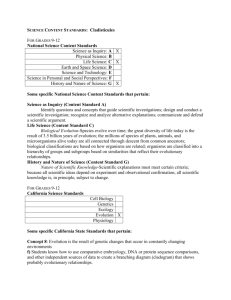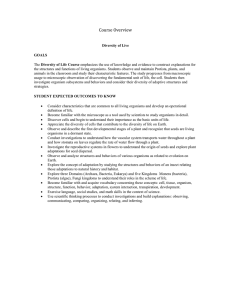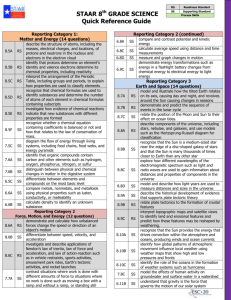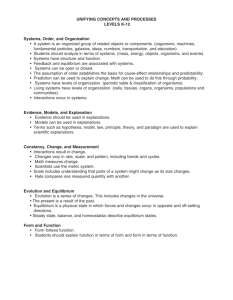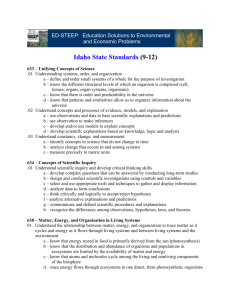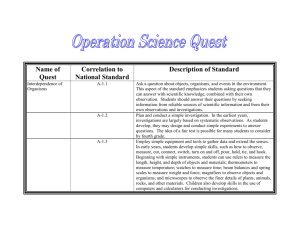SCIENCE CONTENT STANDARDS: Getting to the Roots of Plant
advertisement
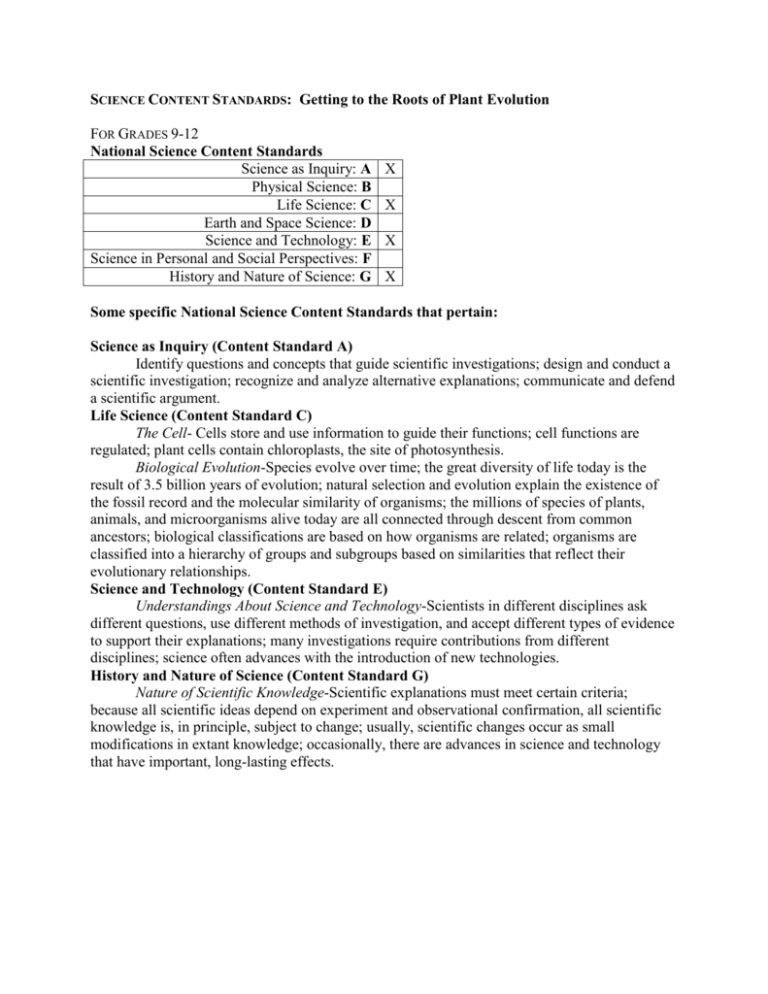
SCIENCE CONTENT STANDARDS: Getting to the Roots of Plant Evolution FOR GRADES 9-12 National Science Content Standards Science as Inquiry: A Physical Science: B Life Science: C Earth and Space Science: D Science and Technology: E Science in Personal and Social Perspectives: F History and Nature of Science: G X X X X Some specific National Science Content Standards that pertain: Science as Inquiry (Content Standard A) Identify questions and concepts that guide scientific investigations; design and conduct a scientific investigation; recognize and analyze alternative explanations; communicate and defend a scientific argument. Life Science (Content Standard C) The Cell- Cells store and use information to guide their functions; cell functions are regulated; plant cells contain chloroplasts, the site of photosynthesis. Biological Evolution-Species evolve over time; the great diversity of life today is the result of 3.5 billion years of evolution; natural selection and evolution explain the existence of the fossil record and the molecular similarity of organisms; the millions of species of plants, animals, and microorganisms alive today are all connected through descent from common ancestors; biological classifications are based on how organisms are related; organisms are classified into a hierarchy of groups and subgroups based on similarities that reflect their evolutionary relationships. Science and Technology (Content Standard E) Understandings About Science and Technology-Scientists in different disciplines ask different questions, use different methods of investigation, and accept different types of evidence to support their explanations; many investigations require contributions from different disciplines; science often advances with the introduction of new technologies. History and Nature of Science (Content Standard G) Nature of Scientific Knowledge-Scientific explanations must meet certain criteria; because all scientific ideas depend on experiment and observational confirmation, all scientific knowledge is, in principle, subject to change; usually, scientific changes occur as small modifications in extant knowledge; occasionally, there are advances in science and technology that have important, long-lasting effects. FOR GRADES 9-12 California Science Standards Cell Biology Genetics X Ecology X Evolution X Physiology Some specific California State Standards that pertain: Concept 4: Genes are a set of instructions encoded in the DNA sequence of each organism that specify the sequence of amino acids in proteins characteristic of that organism. Concept 6: Stability in an ecosystem is a balance between competing effects a) Students know biodiversity is the sum total of different kinds of organisms, and is affected by alterations of habitat. g) Students know how to distinguish between the accommodation of an individual organism to its environment and the gradual adaptation of a lineage of organisms through genetic change. Concept 8: Evolution is the result of genetic changes that occur in constantly changing environments f) Students know how to use comparative embryology, DNA or protein sequence comparisons, and other independent sources of data to create a branching diagram (cladogram) that shows probably evolutionary relationships.
